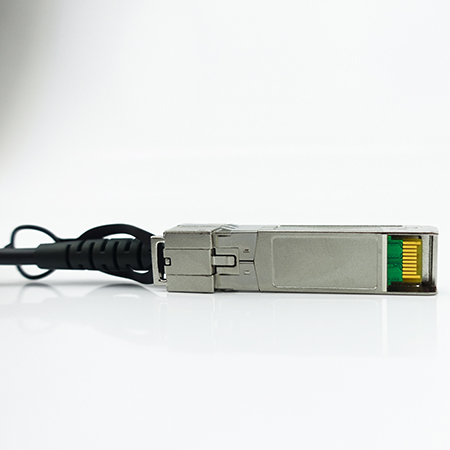Since Active Optical Cables (AOC) and Direct Attach Cables (DAC) are a alteration of optical transceiver, they are used to connect switches with one another when creating a stack or switches to routers or servers. A Direct Attach Cable (DAC) can be produced as passive or active variant. As the passive DAC has no active components, it offers a direct electrical connection between corresponding cable ends. This method can also be completed by an active DAC, which is considered active because there are extra electronics embedded inside the connectors. Therefore it helps to advance signal quality, offering a longer cable distance. The DAC is a fixed assembly that can be bought in several lengths for short distances of up to 15 Meter.
An AOC cable is always active. It has two types of connectors combined with fixed optical fibers with a similar function as optical transceivers. Both DAC and AOC have their particular benefits and drawbacks.
Because of the ongoing growth of fiber technology, someone may believe that copper technology is obsolete. This is not accurate for direct attach copper cables. Indeed, a direct attach copper cable still has its advantages:
Data rate for various applications: Today’s DAC can support higher data rates than old copper interfaces—from 4Gbps to 100Gbps per channel.
Interchangeability: With the growth of copper cable technology, DAC cables are similar and hot swappable just like fiber optic modules.
Cost effective: Supporting such multiple protocols from Gigabit to 100G Ethernet, from up to 8G FC and InfiniBand, Direct Attach Cables (DAC) are a cost effective solution compared to optical transceivers.
DAC

AOC

Transceiver

Though there are a few disadvantages of using direct attach cables: One of it is that direct attach (DAC) copper cables are more thick and massive than AOC cables, making it difficult to be managed. Additionally, since the electrical signals are used, direct attach copper cables are susceptible to the effects of electromagnetic interference (EMI), such as unwanted responses, degradation, or complete system failure.
As mentioned AOCs are a substitute to optical transceivers which exclude the detachable interface between transceiver modules and optical cables. It offers a number of advantages over direct attach copper (DAC) cables.
Lightweight: Due to its material, AOC weighs less than a direct attach copper (DAC) cable.
EMI immunity: Since the optical fiber uses light signals, AOC is immune to electromagnetic interference.
Related to direct attach copper (DAC) cables, the disadvantage of AOC is that it may be a slight more expensive for customers.
Transceivers on the other hand need fibers cable to be plugged into the transceiver module. LC connectors are used to connect fibers to the SFP+ module for example. Transceiver modules have two sides. The first side is known as transmitter, it has a laser for transmitting and a receiver on the other side in from of a photo detector. So basically a transceiver module has a transmitter and a receiver in a single unit. The fiber cable can be single-mode or multi-mode depending upon the requirement of the customer and services needed.
 English
English
 Deutsch
Deutsch
 Espaniol
Espaniol










